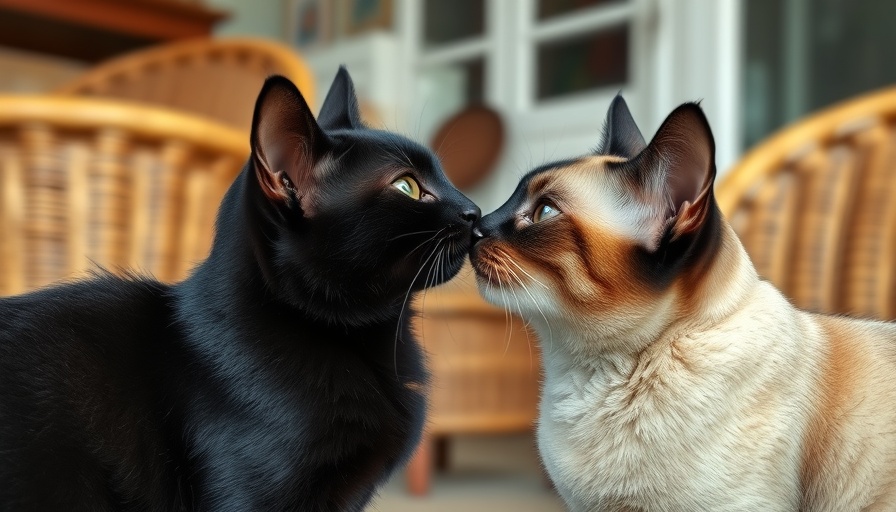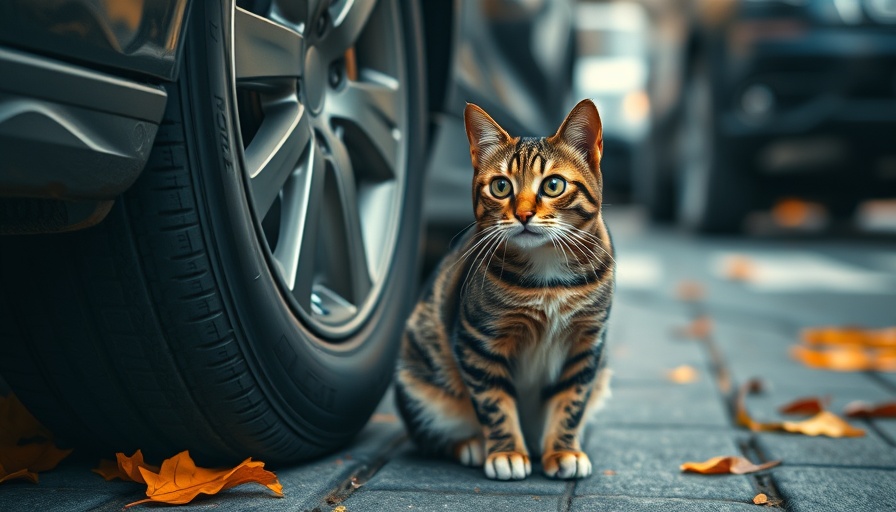
Decoding the Feline Language: How Cats Communicate
Understanding how cats communicate with each other can enhance our relationships with these enigmatic creatures. Much like humans, cats employ a complex combination of body language, vocalizations, and often surprising behaviors to convey their emotions and intentions. Each interaction holds a story, and knowing how to read these signals can help cat owners appreciate the intricate world of feline communication.
The Body Language of Cats: A Silent Symphony
One of the most significant aspects of cat communication is body language. Cats, through their poses and movements, express comfort, fear, and aggression without uttering a single sound. For instance, a cat that lies on its side or sits with a relaxed tail indicates contentment. Conversely, if a cat crouches with its tail tucked under, it is displaying fear or submission. By understanding these body postures, owners can foster a safe environment for their cats. Recognizing signs of stress or aggression can help prevent conflicts.
The Significance of Tail Movements in Communication
The tail is another crucial tool in a cat’s communication arsenal. When held upright, a tail signifies confidence and a willingness to engage. An excited, playful cat will often hold its tail in an arched position. On the other hand, a low or tucked tail reveals fear or insecurity, while fast tail swishing may indicate annoyance or a readiness to strike. Observing a cat’s tail can give insights into its mood and intentions, allowing owners to react accordingly.
Communicating Through Ears and Eyes
The position of a cat's ears can also convey various emotions. Erect ears signal curiosity and alertness, while flattened ears suggest aggression or fear. Additionally, a cat’s eyes can communicate trust or challenge; a slow blink often expresses comfort, sometimes referred to as a “cat kiss.” Building familiarity with these signals transforms the way we interact with our cats, fostering deeper bonds based on understanding.
Chemical Signals: The Hidden Language
In addition to physical cues, chemical signals play a pivotal role in feline interactions. Cats release pheromones through their scent glands, and these chemical signals can communicate a wealth of information, from territory marking to reproductive readiness. This olfactory communication is often subtle, yet it impacts social dynamics heavily. Recognizing this element of communication can help owners better understand their cats’ behavior in multi-cat households.
The Importance of Social Context
While we’ve primarily focused on the individual elements of cat communication, it’s essential to appreciate the social context in which these signals occur. Cats can modify their behavioral cues depending on the personalities and histories of the other cats they’re interacting with. For instance, a more submissive cat may display different behaviors when greeting a dominant cat compared to a playful peer. By being aware of these dynamics, cat owners can create harmony within a multi-cat household.
Play: The Interaction that Deepens Bonds
Playtime is an important aspect of cat communication that serves as a bridge between expressing intentions and emotions. Engaging in play allows cats to socialize and develop their communication skills. When two cats engage in friendly play, the signals become even more pronounced, evident in their postures and sounds. Observing how your cats interact during play can teach you volumes about their relationship and emotional wellbeing.
Recognizing Miscommunication Risks
While many interactions can be resolved through understanding feline communication, there lies a risk of misinterpretation. For example, one cat may view playful biting as affectionate, while the other perceives it as aggression. Being attuned to your cats’ behaviors and understanding their communication styles can help mitigate these concerns, ensuring a more harmonious household.
Creating a Safe Environment for Communication
To encourage positive communication among cats, consider providing ample resources, such as multiple litter boxes, food dishes, and resting areas. This reduces resource competition and enhances overall communication dynamics. Cats are naturally territorial, so giving them their own space can significantly improve their social interactions.
The Bottom Line: What Feline Communication Teaches Us
By decoding the nuances of how cats communicate, we not only foster deeper relationships with our furry companions but also create a harmonious living environment. Understanding the complex interplay of body language, vocalizations, and chemical signals can enhance our ability to respond to our pets’ needs effectively. The heartwarming bond we form through understanding speaks volumes about the enriching experiences shared between humans and cats.
Are you keen to deepen your relationship with your feline friends? By observing their unique behaviors and respecting their communication styles, you can create a loving and attentive home where all your cats feel safe and understood.
 Add Row
Add Row  Add
Add 


Write A Comment